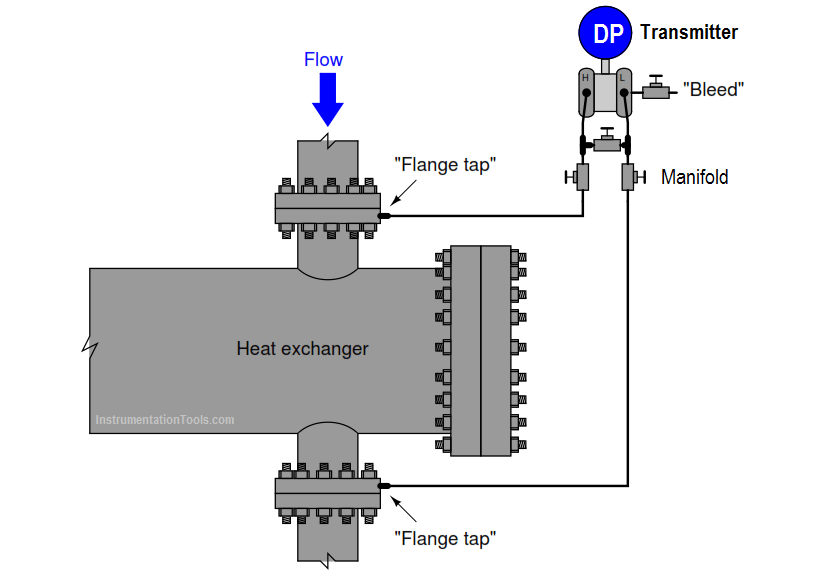Suppose we encounter a differential pressure (DP) transmitter used to measure the pressure drop across a heat exchanger.
The typical pressure on the upstream side of this heat exchanger is 850 PSI, while the typical pressure on the downstream side of this exchanger is 837 PSI. The transmitter connects to this heat exchanger via a three-valve manifold.
A single “bleed” valve installed on the transmitter’s low-pressure side is used to vent pressure to the atmosphere prior to removal of the transmitter from the manifold:

The common procedure for operating a 3-valve manifold to place a transmitter back into service after having isolated it from the process and bleeding any stored pressure to the atmosphere is to first close the bleed valve, then open the low-side block valve, then close off the equalizing valve, and finally open the high-side block valve.
Determine how much fluid pressure will be on each side of the transmitter through every step of this procedure:
Now, suppose someone else (at a later date) was to remove this transmitter from service using the three-valve manifold, and then return it to service following a different order of steps: closing the equalizing valve first, then opening the low-side block valve, and finally opening the high side block valve.
Determine how much fluid pressure will be on each side of the transmitter through every step of this (alternative) procedure:
Based on the pressures seen by the transmitter in both procedures, would you recommend one procedure over the other? If so, why?
Share your answers with us through the below comments section.
Credits: Tony R. Kuphaldt
Learn the water fountain control logic using the PLC timers programming to control the high…
Open Telemetry is a framework for collecting data in cloud-native applications including tracing, metrics, and…
This article is about controlling the Pneumatic cylinder and Pneumatic motor in the assembly line…
In this post, we will learn the basic requirements for a network switch to be…
The PLC panel and MCC panel interface signals are start, stop, run feedback, trip, local…
In this article, we are going to discuss about shutter door control using induction motor…
View Comments
of cours i Will recommande the first methode because if the pressure in the low side is high enough it may destroy the mesurment élément in the transmitter , so appling the same pressure force in both sides would be the best solution